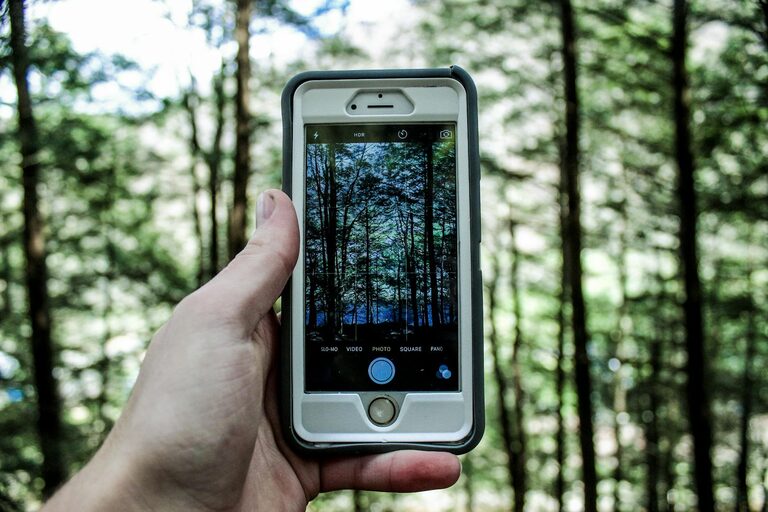
Taking great photos with your phone is easier than you might think. With some simple tips and practice, you can turn everyday moments into beautiful images. Whether you’re new to photography or just want to improve your shots, these beginner tips will help you get started.
Understand Your Phone’s Camera Features
Before diving into snapping photos, take some time to explore your phone’s camera app. Most smartphones come with a range of features that can improve your photos:
– Focus and Exposure: Tap the screen where you want the camera to focus. This also adjusts the exposure (brightness) for that spot.
– HDR Mode: High Dynamic Range (HDR) helps balance light and dark areas in your photos, especially in high-contrast scenes.
– Grid Lines: Turn on grid lines in settings to help with composition using the “rule of thirds” (more on that below).
– Different Lenses: Some phones have multiple lenses like ultra-wide or telephoto; experiment to see what works best.
Knowing these options can help you make quick adjustments for better results.
Keep Your Lens Clean
A simple but often overlooked tip: clean your camera lens before taking photos. Because phone cameras are exposed, fingerprints, dust, or dirt can blur images. Use a soft, lint-free cloth to gently wipe the lens. This small step can make a big difference in photo clarity.
Focus on Composition
Good composition can transform an average photo into something special. Here are some easy guidelines:
Use the Rule of Thirds
Imagine dividing your frame into a 3×3 grid. Place your main subject along these lines or at their intersections. This creates balance and draws viewers’ eyes naturally to your subject.
Find Leading Lines
Look for lines in the scene that guide the viewer’s eye toward the subject — like roads, fences, or bridges. Leading lines add depth and interest.
Keep it Simple
Avoid cluttered backgrounds. A clean, simple backdrop helps your subject stand out.
Fill the Frame
Get close to your subject or zoom in to remove distractions and highlight details.
Lighting is Key
Good lighting can make or break a photo. Here’s what to keep in mind:
– Natural Light is Best: Whenever possible, shoot in natural light like morning or late afternoon for soft, warm tones.
– Avoid Harsh Midday Sun: Bright overhead sun can create harsh shadows. If shooting in midday, look for shade or cloudy skies.
– Use Backlighting Creatively: Position your subject with the light behind them to create interesting silhouettes or glowing effects.
– Avoid Using Flash: Phone flash often produces flat, unnatural light. Instead, try to brighten your scene with ambient light.
Hold Your Phone Steady
Blurry photos often happen because the camera moves during the shot. To prevent this:
– Hold your phone with both hands for better stability.
– Tuck your elbows into your body to reduce shaking.
– Brace your phone against a stable surface when possible.
– Use the volume button or a timer to snap photos instead of tapping the screen to reduce movement.
Experiment with Angles and Perspectives
Don’t just shoot from eye level. Try different angles:
– Crouch down or lie on the ground for a worm’s-eye view.
– Look for higher vantage points for a bird’s-eye perspective.
– Tilt your phone slightly to create dynamic compositions.
Changing your perspective can add creativity and interest.
Use Editing Apps
Editing your photos can enhance colors, brightness, and contrast. Popular apps like Snapseed, Lightroom, or VSCO offer easy-to-use tools suitable for beginners.
– Start with simple adjustments: crop, straighten, and tweak brightness or saturation.
– Avoid over-editing; aim for natural-looking results.
– Experiment with filters if you like, but use them sparingly.
Practice Regularly
Like any skill, photography improves with practice. Take your phone with you and try different settings, subjects, and lighting. Review your photos to see what works and what you can improve.
Don’t Be Afraid to Take Multiple Shots
Digital photography means you can snap dozens of photos without penalty. Take multiple shots from different angles or exposures; later, you can select the best one.
Backup and Organize Your Photos
To keep track of your growing photo collection:
– Use cloud storage options like Google Photos or iCloud for automatic backups.
– Organize your photos into albums for easy access.
– Regularly delete duplicates or blurry shots to save space.
Summary
Improving your phone photography is all about understanding your device, paying attention to light and composition, and practicing regularly. By applying these beginner tips, you’ll be well on your way to capturing memorable and striking images with your phone.
Happy shooting!

